Resident Crews of the International Space Station (ISS)
![]()
ISS: Expedition 26 |
 |
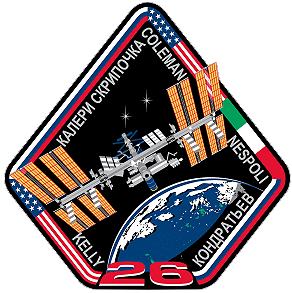 |
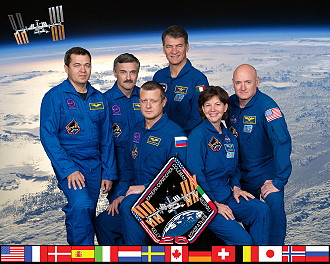 |
alternative crew photo |
|
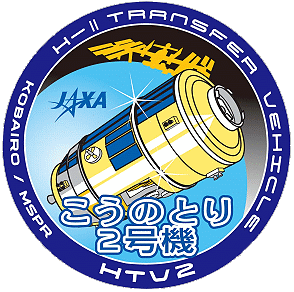 |
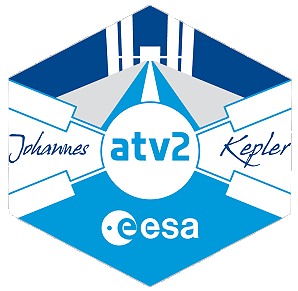 |
![]()
Crew, launch- and landing data
| No. | Nation | Surname | Given names | Position | Spacecraft (launch) |
Launch date |
Launch time |
Spacecraft (landing) |
Landing date |
Landing time |
Mission duration |
Orbits |
| 1 | Kelly | Scott Joseph | ISS-CDR | Soyuz TMA-01M | 07.10.2010 | 23:10:54.810 UTC | Soyuz TMA-01M | 16.03.2011 | 07:54:05.3 UTC | 159d 08h 43m 10s | 2509 | |
| 2 | Kaleri | Aleksandr Yuriyevich | Flight Engineer-1 | Soyuz TMA-01M | 07.10.2010 | 23:10:54.810 UTC | Soyuz TMA-01M | 16.03.2011 | 07:54:05.3 UTC | 159d 08h 43m 10s | 2509 | |
| 3 | Skripochka | Oleg Ivanovich | Flight Engineer-2 | Soyuz TMA-01M | 07.10.2010 | 23:10:54.810 UTC | Soyuz TMA-01M | 16.03.2011 | 07:54:05.3 UTC | 159d 08h 43m 10s | 2509 | |
| 4 | Kondratiyev | Dmitri Yuriyevich | Flight Engineer-4 | Soyuz TMA-20 | 15.12.2010 | 19:09:24.963 UTC | Soyuz TMA-20 | 24.05.2011 | 02:26:40.1 UTC | 159d 07h 17m 15s | 2508 | |
| 5 | Nespoli | Paolo Angelo | Flight Engineer-5 | Soyuz TMA-20 | 15.12.2010 | 19:09:24.963 UTC | Soyuz TMA-20 | 24.05.2011 | 02:26:40.1 UTC | 159d 07h 17m 15s | 2508 | |
| 6 | Coleman | Catherine Grace "Cady" | Flight Engineer-6 | Soyuz TMA-20 | 15.12.2010 | 19:09:24.963 UTC | Soyuz TMA-20 | 24.05.2011 | 02:26:40.1 UTC | 159d 07h 17m 15s | 2508 |
unofficial Backup Crew
| No. | Nation | Surname | Given names | Position |
| 1 | Volkov | Sergei Aleksandrovich | ISS-CDR | |
| 2 | Kononenko | Oleg Dmitriyevich | Flight Engineer | |
| 3 | Garan | Ronald John, Jr. | Flight Engineer | |
| 4 | Ivanishin | Anatoli Alekseyevich | Flight Engineer | |
| 5 | Furukawa | Satoshi | Flight Engineer | |
| 6 | Fossum | Michael Edward | Flight Engineer |
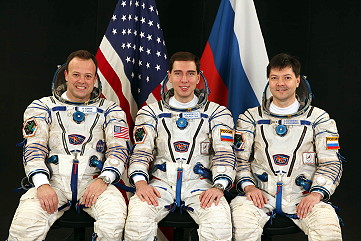 |
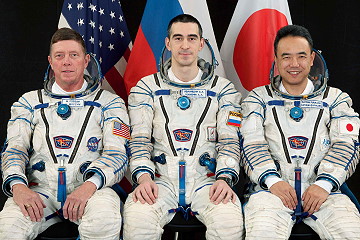 |
 |
Expedition Report
|
Launch from the Baikonur Cosmodrome (Dmitri
Kondratiyev, Paolo
Nespoli and Catherine
Coleman with
Soyuz
TMA-20). Scott
Kelly, Aleksandr
Kaleri and Oleg
Skripochka were onboard since October 10, 2010 (arrival with
Soyuz
TMA-01M). ISS Expedition 26 began with the undocking of spacecraft Soyuz TMA-19 on November 26, 2010 at 01:23:13 UTC. The former Expedition 25 (Fyodor Yurchikhin, Shannon Walker and Douglas Wheelock) returned safely to Earth. With the arrival of Soyuz TMA-20 on December 17, 2010 at 20:11 UTC the Expedition 26 became a six-person-crew. Soyuz TMA-20 carried Dmitri Kondratiyev, Paolo Nespoli and Catherine Coleman to the space station. ESA astronaut Paolo Nespoli's mission to the space station was named MagISStra. The name combines the word magistra, meaning "female teacher" in Latin, with the acronym "ISS", as suggested by Antonella Pezzani of Italy. The first EVA by Dmitri Kondratiyev and Oleg Skripochka occurred on January 21, 2011 (5h 23m) to complete installation of a new high-speed data transmission system, remove an old plasma pulse experiment, install a camera for the new Rassvet docking module and retrieve a materials exposure package. When Dmitri Kondratiyev and Oleg Skripochka set out on the first EVA of Expedition 26, NASA equipped Oleg Skripochka's helmet with lights and a wireless television camera to provide a live point-of-view feed to mission controls in Houston and Moscow. As they were tasked with several jobs during this EVA, they clipped all of their tool carriers and new equipment to Zvezda's exterior for easy access and storage between the jobs. Firstly, they deployed an antenna to be used for the radio technical system for information transfer. The experimental system was designed to allow NASA, RSA, ESA, and other space agencies on Earth to downlink data files from ISS at the speed of about 100 Mb per second using radio signals. Once they erected the antenna, they routed external cables, connecting it to patch panels that then connected it to computers within ISS. Upon completion of this task, the cosmonauts jettisoned the antenna's hatbox-shaped cover and its cable reel. Dmitri Kondratiyev and Oleg Skripochka then retrieved two experiments hanging on ISS's exterior. One was a plasma pulse generator that was supposed to measure disturbances in the ionosphere caused by the Station's plasma impulse flow, but the test experienced an early fail. The other was the Expose-R experiment canister. The spacewalkers retrieved both from the port side of Zvezda and placed them in Pirs, along with a tool bag they used while installing the antenna. After placing the experiments in the airlock, they grabbed a docking camera left to install on Rassvet. Oleg Skripochka and Fyodor Yurchikhin had tried to install this camera on November 15, 2010, but they encountered problems getting past the insulation. For this spacewalk, Oleg Skripochka and Dmitri Kondratiyev equipped themselves with special cutters to tear through the insulation threading, which allowed them to work around the camera mount unobstructed. After installing the camera, they connected its cable to a prewired connector, which fed the video to the Station, and they returned to Pirs airlock On January 27, 2011 the Japanese cargo module HTV-2 "Kounotori 2" arrived at the International Space Station and was attached by Catherine Coleman and Paolo Nespoli using the station's Canadarm2 robotic arm. Kounotori 2 was initially scheduled to launch on January 20, 2011, but this was postponed for two days due to a bad weather forecast. The H-IIB rocket with Kounotori 2 onboard was successfully launched from Tanegashima Space Center on January 22, 2011, 05:37:57 UTC. It made its rendezvous with the space station for a subsequent docking to the Harmony node's nadir port on January 27, 2011. Kounotori 2 carried 5.3 tons of cargo to ISS, consisting of 4 tons in the Pressurized Logistics Carrier (PLC) and 1.3 tons in the Unpressurized Logistics Carrier (ULC). Cargo in the PLC consists of spare system components (51% of cargo weight), food (24%), science experiment materials (10%), crew commodities (8%), and water (7%). It included the Kobairo (Gradient Heating Furnace) rack and a Multipurpose Small Payload Rack (MSPR). The Gradient Heating Furnace is a high-temperature electrical furnace that will be used to generate large scale, high-quality crystals from melting materials. The MSPR is a multipurpose rack that will be used for many different functions. The rack consists of three main components - a Work Volume, a Work Bench, and a Small Experiment Area. One experiment that is already planned for the Work Volume, to be launched on a later flight, is the Aquatic Habitat, which will be used to breed small fish in order to study their responses to microgravity and cosmic radiation. Once Kounotori 2 was berthed to the ISS, both Kobairo and the MSPR were transferred into the Japanese Pressurized Module. The installation and commissioning of these racks will initiate the 2nd phase of the Japanese Experiment Module (JEM) utilization. Kounotori 2's Unpressurized Logistics Carrier (ULC) carried an EP (Exposed Pallet) with two US ORUs (Orbital Replacement Units) attached: an FHRC (Flex Hose Rotary Coupler) and CTC-4 (Cargo Transportation Container-4). Both the FHRC and CTC-4 were transferred from Kounotori 2's EP to the space station's ELC-4 using the ISS's manipulator "Dextre". Space shuttle mission STS-133 arrived while Kounotori 2 was berthed to ISS. To avoid interference with the payload bay of the shuttle, Kounotori 2 was relocated from Harmony Nadir port to Zenith port. This was done on February 18, 2011, before the launch of STS-133. After space shuttle Discovery departed the International Space Station and the STS-133 mission was completed, on March 10, 2011, the ISS crew robotically relocated Kounotori 2 back to the nadir port of the Harmony module. The moving operation began at 11:49 UTC. The spacecraft was attached to the Common Berthing Mechanism (CBM) at Harmony's Earth facing nadir port at 16:19 UTC. After an extended two-month stay, on March 28, 2011, Kounotori 2 was detached from the docking port by robotic hand at 15:29 UTC and released at 15:46 UTC. It reentered to the Earth atmosphere at around 03:09 UTC on March 30, 2011. Progress M-09M was launched on January 28, 2011 at 01:31:39 UTC. The Progress spacecraft maneuvered to rendezvous with the space station. It arrived at the ISS on January 30, 2011, successfully docking to the nadir port of the Pirs at 02:39 UTC. Progress M-09M was carrying 2,666 kilograms (5,878 lb) of cargo to the space station, consisting of 1,444 kilograms (3,183 lb) of dry cargo, 752 kilograms (1,658 lb) of propellant, 50 kilograms (110 lb) of oxygen and 420 kilograms (930 lb) of water. Of the fuel aboard the spacecraft, 250 kilograms (550 lb) are reserved for orbital maneuvers whilst docked, such as raising or lowering the station's orbit, whilst the remaining 502 kilograms (1,107 lb) will be used for refueling the station itself. The dry cargo aboard Progress M-09M includes parts for the oxygen and water supply systems and the thermal control system, as well as equipment for hardware control and the station's electrical and telemetry systems. Also, aboard the spacecraft is 147 kilograms (324 lb) of equipment for conducting scientific research aboard the station. For the crew, food, medical and hygiene equipment will also be delivered, as well as documentation and personal items including books by Konstantin Tsiolkovsky and a birthday present for station commander Scott Kelly. The Kedr miniaturized satellite was delivered to the ISS aboard Progress M-09M. It is an amateur radio satellite which will be deployed from the station during an EVA on February 16, 2011. The satellite will be operated by RSC Energiya, and is part of the RadioSkaf program. It is intended to commemorate the fiftieth anniversary of the Vostok 1 mission. Progress M-09M was undocked from the Pirs module at 11:41 UTC on April 22, 2011. After departing the space station, the spacecraft was used for Radar-Progress scientific experiment to investigate a reflection feature of the plasma generated by operations of the Progress propulsion. Upon the completion of this experiment the spacecraft was deorbited, and reentered over the "spacecraft cemetery" in the South Pacific Ocean. The deorbit maneuver was performed on April 26, 2011, with debris falling into the ocean at 13:23 UTC. The second and final EVA was performed again by Dmitri Kondratiyev and Oleg Skripochka on February 16, 2011 (4h 51m) to install two experiments. One will collect information useful in seismic forecasts and earthquake predictions, and the second will look at gamma splashes and optical radiation during terrestrial lightning and thunderstorms. The spacewalkers also retrieved a pair of panels exposed to space as part of an experiment to identify the best materials for building long-duration spacecraft. The cosmonauts also deployed an experiment called ARISSat-1, or Radioskaf-V, a boxy 57-pound nanosatellite that houses congratulatory messages commemorating the 50th anniversary of Yuri Gagarin's launch to become the first human in space. The Johannes Kepler ATV, or Automated Transfer Vehicle 002 (ATV-002), was an unmanned cargo spacecraft built to resupply the International Space Station (ISS). It was launched on February 16, 2011 by the European Space Agency (ESA). Johannes Kepler carried propellant, air and dry cargo weighing over 7,000 kilograms (15,000 lb), and had a total mass of over 20,000 kilograms (44,000 lb), making it, at the time, the heaviest payload launched by the ESA. The spacecraft was named after the 17th-century German astronomer Johannes Kepler. Johannes Kepler delivered the GeoFlow II hydrodynamics experiment container to the ISS. This experiment was designed to observe liquid movements in microgravity, and compare them with computer simulations, thus helping scientists to understand convection currents within the Earth's mantle. Johannes Kepler was the second ATV cargo resupply vehicle to be launched, following the Jules Verne mission of 2008. Johannes Kepler carried around five tons more cargo than Russia's Progress-M resupply spacecraft, and about 1.5 tons more than the Japanese HTV. The ATV used 4,500 kilograms (9,900 lb) of fuel to boost the ISS's altitude from 350 to 400 km. Docking with the ISS was completed on February 24, 2011 at 15:59 UTC, after a 15-minute delay. The spacecraft traveled over eight days to catch up with the space station, and arrived at the aft port of the station's Zvezda service module. During the rendezvous operations, ATV-2 traveled a total of 2.5 million miles (4 million km). The docking occurred as ATV-2 and the ISS flew over the coast of Liberia in western Africa. Hooks and latches engaged a few minutes later to firmly attach ATV-2 to the ISS. It undocked from the ISS on June 20, 2011. Johannes Kepler performed a destructive re-entry as intended on June 21, 2011, with its remains impacting the Pacific Ocean. On February 26, 2011 Space Shuttle STS-133 docked with the International Space Station. The mission STS-133 (ISS-ULF-5 / ELC-4) transported several items to the space station, including the Permanent Multipurpose Module Leonardo, which was left permanently docked to one of the station's ports. The shuttle also carried the third of four ExPRESS Logistics Carriers to the ISS, as well as a humanoid robot called Robonaut. The Permanent Multipurpose Module (PMM) is a large, reusable pressurized element, carried in the space shuttle's cargo bay, originally used to ferry cargo back and forth to the station. For STS-133, the PMM, known as Leonardo, was modified to become a permanent module attached to the International Space Station. Once in orbit, the PMM will offer 2,472 additional cubic feet (70 cubic meters) of pressurized volume for storage and for scientific use. The module is carried in the cargo bay of Discovery and will be connected to the Unity node on the station. To transform an existing logistics carrier used for 10 years into a permanent module able to stay an additional 10 years in orbit, modifications consisted of the following: Enhance the module shielding with an improved micrometeoroid debris protective shield design to satisfy the new penetration requirements. Provide the in-orbit maintenance capability by changing the internal harness routing and brackets layout to allow the crew accessibility to the internal equipment. Provide easy interfaces for future exploitation of the retained resources. Provide a certified life extension for all equipments and subsystems. Develope a software update to eliminate faulty alarms. The Italian Space Agency contracted with Thales Alenia Space, which also designed and built the three multi-purpose logistic modules, to make the modifications. This module flew seven times as Leonardo, the multipurpose logistics module. As the PMM module, this will be its final flight and the last pressurized element to be added to the U.S. operating segment (USOS) of the station. On the STS-133 mission, the PMM will carry 14 racks to the station - one experiment rack, six resupply stowage platforms (RSPs), five resupply stowage racks (RSRs), and two integrated stowage platforms (ISPs). The Express Logistics Carrier (ELC) is a platform designed to support external payloads mounted to the International Space Station starboard and port trusses with either deep space or Earth-ward views. Each pallet spans the entire width of the shuttle's payload bay, can carry science experiments and serves as a parking place for spare hardware that can be replaced robotically once in space. For STS-133, Discovery will carry the ELC-4 to the station to be positioned on the starboard 3 (S3) truss lower inboard passive attachment system (PAS). ELC -1 and ELC-2 were placed on the station's truss structure during STS-129. ELC-1 is mounted on the port 3 (P3) truss element unpressurized cargo carrier attachment system (UCCAS) while ELC-2 is placed on the S3 truss upper outboard PAS. The weight of ELC-4 is approximately 8,161 pounds (3,702 kg). Remmele Engineering, based in Minneapolis, built the integral aluminum ELC decks for NASA. Engineers from NASA Goddard Space Flight Center's carriers development office developed the lightweight ELC design, which incorporates elements of both the express pallet and the unpressurized logistics carrier. Orbital Science Corporation built the ELC. The ELC is designed to be carried in the space shuttle cargo bay to the station, fully integrated with cargo. Four ELCs will be attached to the station before the scheduled retirement of the space shuttle. Two ELCs will be attached to the S3 and two ELCs will be mated to the P3. By attaching at the S3/P3 sites, a variety of views such as deep space or Earthward directions with a combination of forward or aft pointing allows for many possible viewing opportunities. Cargo stationed on the ELC will be exposed to the microgravity and vacuum environments of space for extended periods of time while docked to the station, unshielded from incident radiation and orbital debris. Robonaut 2, the latest generation of the Robonaut astronaut helpers, is set to launch to the space station aboard space shuttle Discovery on the STS-133 mission. It will be the first humanoid robot in space, and although its primary job for now is teaching engineers how dexterous robots behave in space, the hope is that through upgrades and advancements, it could one day venture outside the station to help spacewalkers make repairs or additions to the station or perform scientific work. R2, as the robot is called, will launch inside the Leonardo Permanent Multipurpose Module, which will be packed with supplies and equipment for the station and then installed permanently on the Unity node. Once R2 is unpacked - likely several months after it arrives - it will initially be operated inside the Destiny laboratory for operational testing, but over time, both its territory and its applications could expand. There are no plans to return R2 to Earth. Space Shuttle Discovery also carried the Developmental Test Objective (DTO) 701B payload using Advanced Scientific Concepts, Inc.'s DragonEye 3D Flash light intensification detection and ranging (LIDAR) sensor. The addition of the pulsed laser navigation sensor was the third time a space shuttle has provided assistance to the commercial space company SpaceX, following STS-127 and STS-129. The DragonEye on STS-133 incorporated several design and software improvements from the version flown on STS-127 to provide increased performance. Its inclusion on STS-133 was part of a final test run ahead of being fully implemented on SpaceX's Dragon spacecraft, which had its maiden flight in December 2010. The navigation sensor provides a three-dimensional image based on the time of flight of a single laser pulse from the sensor to the target and back. It provides both range and bearing information from targets that can reflect the light back such as the pressurized mating adapter 2 (PMA-2) and those on the station's Japanese Kibo laboratory. The DragonEye DTO was mounted onto Discovery's existing trajectory control system carrier assembly on the orbiter's docking system. SpaceX took data in parallel with Discovery's Trajectory Control Sensor (TCS) system. Both the TCS and DragonEye "looked" at the retroreflectors that are on the station. After the mission, SpaceX compared the data DragonEye collected against the data collected by the TCS to evaluate DragonEye's performance. Following docking the hatches were finally opened at 21:16 UTC, and the Expedition 26 crew greeted the crew of STS-133. Later this day Michael Barratt and Nicole Stott used the station's robotic arm to pluck Express Logistic Carrier 4 from the shuttle cargo bay and hand it off to the shuttle's arm, operated by Alvin Drew and Eric Boe. After moving the base of Canadarm2, the shuttle arm was to hand ELC-4 back for installation on the Earth-facing side of the station's starboard truss. There it will be used for stowage of spare parts, including a spare radiator launched aboard Discovery. ELC-1 and 2 were placed on the station's truss structure during STS-129. ELC-1 is mounted on the lower inboard position on the port side of the station. ELC-2 is on the upper outboard side of the starboard truss, right next to where the Alpha Magnetic Spectrometer will be installed on STS-134. That mission also will deliver ELC-3, which will be the final logistics carrier installed on the station. It will be positioned on the upper outboard attachment point on the port side. On flight day 4, Nicole Stott and Michael Barratt grappled the Orbiter Boom Sensor System (OBSS) using the Canadarm2 and removed it from the starboard sill of Discovery's payload bay. Once it was grappled and out of the payload bay, the Shuttle Remote Manipulator System (SRMS) grappled the end of the OBSS and took a hand off from the Canadarm2. The OBSS was grappled by the space station arm, because the SRMS could not reach it due to clearance issues, and it needed to be moved out of the way so that the Permanent Multipurpose Module (PMM) could be removed from the payload bay. After the OBSS hand off, the entire STS-133 crew was joined by ISS Expedition 26 Commander Scott Kelly and Flight Engineer Paolo Nespoli for a series of in-flight media interviews. The crew also completed more cargo transfers to and from the ISS. Throughout the day, Alvin Drew and Steve Bowen prepared tools that they would use on their spacewalk on flight day 5. Later in the day, they were joined by the shuttle crew and ISS Commander Scott Kelly and Flight Engineer Paolo Nespoli, for a review of the spacewalk procedures. After the review, Stephen Bowen and Alvin Drew donned oxygen masks and entered the crew lock of the Quest airlock for the standard pre-spacewalk campout. The airlock was lowered to 10.2 psi for the night. This was done to help the spacewalkers purge nitrogen from their blood and help prevent decompression sickness, also known as the bends. The first EVA by Stephen Bowen and Alvin Drew occurred on February 28, 2011 (6h 34m). They installed a power extension cable between the Unity and Tranquility nodes to provide a contingency power source should it be required. The spacewalkers moved the failed ammonia pump module that was replaced in August 2010 from an attachment bracket to a stowage platform adjacent to the Quest airlock. Alvin Drew and Stephen Bowen installed a piece of hardware that will go under a camera on the truss. The hardware will tilt the camera to provide clearance for a spare part to be installed on a future mission. They next replaced a guide for the rail cart system used for moving cargo along the truss. The guides were removed when the astronauts were performing work on the station's starboard Solar Alpha Rotary Joint, which rotates the solar arrays to track the sun. Of course, one of the primary goals of STS-133 was to deliver the new Permanent Multipurpose Module (PMM), to the space station. But before it could be attached to the Unity node, an extension cable must be installed on the J612 cable. The cable, which powers secondary airlock heaters, was inaccessible after the PMM is installed in its current state. The extension cable will make any future replacements of the system that might be necessary easier. Installing the extension cable took Stephen Bowen and Alvin Drew about 30 minutes. To do so, Stephen Bowen removed dust caps from the cable and released some wire ties currently holding the J612 cable in place. Then, he disconnected the original cable from the Unity node and connected the extension cable in its place, before tying down the extension cable. Alvin Drew, meanwhile, connected the extension cable to the original cable, which runs to the Quest airlock. He also worked to secure the cables in place. From there, Stephen Bowen moved to the external stowage platform 2, where a foot restraint was waiting for him to attach it to the space station's robotic arm. On it, Stephen Bowen moved to the payload orbital replacement unit accommodation (POA), which is basically one of the robotic arm "hands" without the arm, used to temporarily store equipment. In this case, the equipment was the pump module that failed over the summer 2010. To remove the pump module from the POA, Stephen Bowen installed a handle on the module and then had the robotics officers release the POA's hold on it. He carried the module back to the external stowage platform, which was its long-term storage location. While Stephen Bowen retrieved the module, Alvin Drew retrieved from the port truss' crew equipment and translation aid, (CETA), cart a tool that was used to remove remaining ammonia from the pump module. Stephen Bowen and Alvin Drew worked together to secure the pump module. Four bolts were installed to hold it in place. They also installed the tool Alvin Drew retrieved - called the vent tool - for use on the second spacewalk. Once that task was over, Stephen Bowen climbed off of the robotic arm. While he did so, Alvin Drew moved to a piece of the station's truss near the center of the system - the Z1 segment - where he folded back two flaps of insulation on a remote power control module, relocated a tool stanchion and retrieved another foot restraint, this one to store inside the airlock. Afterward, Stephen Bowen and Alvin Drew came back together to install a camera wedge on a video camera on the first starboard segment of the station's truss. The wedge gave the camera added clearance that it will need once the ExPRESS Logistics Carrier 4 that Discovery delivered is installed nearby. To install the wedge, Alvin Drew removed the camera's stanchion by removing one bolt. The wedge was secured to the truss using a bolt, and then the stanchion bolted back onto the wedge. The spacewalkers then moved together further down the starboard truss to the solar alpha rotary joint at the starboard three segment. There, they were installing two extensions to the station's mobile transporter track, which will allow the mobile transporter to travel the entire length of the track with the CETA cart and still reach all the worksites. Each extension (one on either rail of the track) was secured by two bolts. Alvin Drew and Stephen Bowen wrapped up their work at S3 by pushing two "stops" out of the way on the rails - one meant to keep the mobile transporter from passing and one meant to keep a spacewalker's tether from passing. The last task for the first spacewalk of the mission was for Stephen Bowen and Alvin Drew to participate in the Japan Aerospace Exploration Agency activity called Message in a Bottle. They opened and filled a metal cylinder that was signed by other astronauts who have flown in space. The bottle then was returned to the ground for public display. On March 01, 2011 Michael Barratt and Nicole Stott inched the 58-foot-long (17.7 meters) space station robotic arm onto a grapple fixture on the Permanent Multipurpose Module (PMM). The arm lifted the fully-loaded 28,353-pound (12,861 kg) PMM from space shuttle Discovery's cargo bay and carry it to the Earth-facing port on the Unity node, where it will be permanently attached. The second and final EVA was performed by Stephen Bowen and Alvin Drew on March 02, 2011 (6h 14m). The astronauts removed thermal insulation from a platform, while Stephen Bowen swapped out an attachment bracket on the Columbus module. Stephen Bowen then installed a camera assembly on the Dextre robot then removed insulation from Dextre's electronics platform. Alvin Drew installed a light on a cargo cart and repaired some dislodged thermal insulation from a valve on the truss then removed other insulation from Tranquility. The final task was to "fill" a special bottle with space for a Japanese education payload. The bottle will be part of a museum exhibit for public viewing. The second spacewalk of the mission included one more task to finish up the work with the failed pump module. That task - removing the remaining ammonia from the pump module - took Alvin Drew about an hour. The balance of the two spacewalker's six and a half hours scheduled outside the station was spent on the assorted tasks originally assigned to the STS-133 mission. The pump module work was first up on Alvin Drew's timeline. As the vent tool was been installed on the first spacewalk, Alvin Drew simply had to open the vent and wait about two minutes for ammonia to be vented out to space. (The tool allows it to vent without contaminating Alvin Drew's spacesuit with ammonia.) Once it was done, he removed the tool and took it back to the Quest airlock. Meanwhile, Stephen Bowen was climbing back into the foot restraint on the station's robotic arm. He rode the robotic arm to the end of that module to pick up a lightweight adapter plate assembly, which was used to attach experiments to the exterior of Columbus. Stephen Bowen stored it on the sidewall carrier in the shuttle's cargo bay to return home with Discovery. This task was originally scheduled for STS-131, but canceled due to time constraints. Stephen Bowen needed to remove one bolt to retrieve the plate and install one bolt to secure it in the cargo bay. Alvin Drew removed some insulation from the avionics assembly on the new ExPRESS Logistics Carrier 4 and retrieved three sets of stowage bags from the CETA cart on the port side of the station's truss system. The spacewalkers continued to work separately throughout the rest of the spacewalk. The robotic arm flew Stephen Bowen to the special purpose dexterous manipulator, or Dextre. There, he installed a second camera (using one bolt) on the robot and removed an unnecessary insulation blanket, while Alvin Drew installed a light on the port CETA cart. To install the light, Alvin Drew disconnected a cable on a stanchion on the CETA cart and connected it to the new light, then drove one bolt to hold it in place. From there, Alvin Drew travelled to a radiator beam on the first port segment of the truss and installed insulation on its valve module fluid line. He also spent some time troubleshooting a radiator grapple fixture stowage beam. The beam, which was originally installed on STS-131, was used temporarily to store handles that would be necessary if a radiator ever needed to be replaced. However, during its installation, the astronauts noticed the beam was looser than they expected. Experts on the ground think this might be because the two bolts securing it did not seat properly or were misaligned. So, to fix that, Alvin Drew was releasing the two bolts and redriving them. Afterward, Alvin Drew moved to the Tranquility node to remove some insulation covering electrical connectors. In the meantime, Stephen Bowen had gotten off the robotic arm. Since he was in the vicinity, his next task was to install a lens cover on the camera on the arm's elbow joint. The cover will protect the lens from any erosion that might be caused by the thruster plume of visiting vehicles that the arm is used to dock. It is attached using a lever that locks it into place. The rest of the spacewalk was spent installing similar covers on other cameras. Stephen Bowen installed one of Dextre's cameras (the one he did not install earlier in the spacewalk). And Alvin Drew's last tasks were to install a lens cover on the POA's camera. On March 07, 2011 STS-133 undocked and moved to a distance of about 450 feet (137.2 meters), where Eric Boe began to fly around the station. Discovery circled the shuttle around the station at a distance of 600-700 feet (182-213 meters). Once the shuttle completed 1.5 revolutions of the complex, Eric Boe fired Discovery's jets to leave the area. The shuttle began to increase its distance behind the station with each trip around the earth while the crew conducted one last inspection of the heat shield using the Orbiter Boom Sensor System. The distance was close enough to allow the shuttle to return to the station in the unlikely event that the heat shield is damaged, preventing the shuttle's safe re-entry. The Expeditions 25 / 26 crews worked with some 115 experiments involving approximately 380 researchers across a variety of fields, including human life sciences, physical sciences and Earth observation, and conduct technology demonstrations ranging from recycling to robotics. Seventy-two of these experiments were sponsored by U.S. investigators, including 18 under the auspices of the U.S. National Laboratory program, and 43 sponsored by international partner investigators - the Canadian Space Agency (CSA), the European Space Agency (ESA) and the Japan Aerospace and Exploration Agency (JAXA). More than 680 hours of research are planned. A suite of experiments organized by the Russian Federal Space Agency (RSA), Roscosmos, were also planned. The arrival of the Permanent Multipurpose Facility, an Italian-built converted pressurized cargo carrier named Leonardo, added 2,700 cubic feet of pressurized volume to the orbiting laboratory, increasing the total habitable volume of the station to 13,846 cubic feet. Robonaut 2 was installed in the U.S. Destiny Laboratory, providing scientists and engineers on the ground and crews on the station an opportunity to test how humans and human-like robots can work shoulder to shoulder in microgravity. Once this has been demonstrated inside the station, software upgrades and lower bodies can be added, potentially allowing Robonaut 2 to move around inside the station and eventually work outside in the vacuum of space. This will help NASA understand robotic capabilities for future deep space missions. Two new science facilities were delivered to the station for use in a variety of investigations: the Boiling Experiment Facility (BXF), which will support microgravity experiments on the heat transfer and vapor removal processes in boiling, and the eighth Expedite the Processing of Experiments to Space Station (EXPRESS) rack, which will be installed in the Destiny Laboratory module. The new boiling research apparatus will support the Microheater Array Boiling Experiment and the Nucleate Pool Boiling Experiment. Boiling efficiently removes large amounts of heat by generating vapor from liquid, and is used on Earth in electric power plants, electronic cooling and purification, and separation of chemical mixtures. For boiling to become an effective method for cooling in space, scientists need to determine the critical heat flux, the point at which the heater is covered with so much vapor that liquid supply to the heater decreases. A Japanese experiment that uses cucumbers, called Dynamism of Auxin Efflux Facilitators Responsible for Gravity-regulated Growth and Development in Cucumber (CsPINs), was continued to expand the body of knowledge on how plants react to the microgravity environment since growing plants for food and oxygen generation is expected to be an important factor for long-duration missions to distant space destinations. As with prior expeditions, many experiments are designed to gather information about the effects of long-duration spaceflight on the human body, which will help us understand complicated processes such as immune systems while planning for future exploration missions. The investigations cover human research, biological and physical sciences, technology development, Earth observation and education. In the past, assembly and maintenance activities have dominated the available time for crew work. But as completion of the orbiting laboratory nears, additional facilities and the crew members to operate them is enabling a measured increase in time devoted to research as a national and multi-national laboratory. Also, on tap in the area of technology demonstration is the resumption of work with a recycling device known as Sabatier, designed to help wring additional water from excess hydrogen not yet being reclaimed by the station's water recovery system. Managing the international laboratory's scientific assets, as well as the time and space required to accommodate experiments and programs from a host of private, commercial, industry and government agencies nationwide, makes the job of coordinating space station research critical. Teams of controllers and scientists on the ground continuously plan, monitor and remotely operate experiments from control centers around the globe. Controllers staff payload operations centers around the world, effectively providing for researchers and the station crew around the clock, seven days a week. Alpha Magnetic Spectrometer - 02 (AMS-02) seeks to understand fundamental issues on the origin and structure of the universe. NanoRacks-CubeLabs is a multipurpose research facility aboard the International Space Station which supports NanoRacks-CubeLabs modules by providing power and data transfer capabilities to operate investigations in microgravity. Photosynth™ Three-Dimensional Modeling of ISS Interior and Exterior (Photosynth) will synthesize three-dimensional models of the International Space Station from a series of overlapping still photographs mainly as a tool for education and public outreach. Photosynth is a collaboration between the National Aeronautics and Space Administration and the Microsoft Live Labs. Bisphosphonates as a Countermeasure to Space Flight Induced Bone Loss (Bisphosphonates) will determine whether antiresorptive agents which help reduce bone loss, in conjunction with the routine in-flight exercise program, will protect station crew members from the regional decreases in bone mineral density documented on previous station missions. Physiological Factors Contributing to Changes in Postflight Functional Performance (Functional Task Test) will test astronauts on an integrated suite of functional and physiological tests before and after short and long-duration spaceflight. The study will identify critical mission tasks that may be impacted, map physiological changes to alterations in physical performance and aid in the design of countermeasures that specifically target the physiological systems responsible for impaired functional performance. IntraVenous Fluid GENeration for Exploration Missions (IVGEN) will demonstrate the capability to purify water to the standards required for intravenous administration, then mix the water with salt crystals to produce normal saline. This hardware is a prototype that will allow flight surgeons more options to treat ill or injured crew members during future long-duration exploration missions. Burning and Suppression of Solids (BASS) will test the hypothesis that materials in microgravity burn as well, if not better, than the same material in normal gravity with other conditions, such as pressure, oxygen concentration and temperature, being identical. Investigating the Structure of Paramagnetic Aggregates from Colloidal Emulsions - 3 (InSPACE-3) will obtain data on magnetorheological fluids - fluids that change properties in response to magnetic fields - that can be used to improve or develop new brake systems for vehicles and robotics. Structure and Liftoff In Combustion Experiment (SLICE) investigates the structure of lifting and lifted flames; whereby the flame detaches from the nozzle and stabilizes at a downstream position. Results from this investigation are used to maximize the science return from the future Coflow Laminar Diffusion Flame Experiment. The objective of DOBIES is to develop a standard dosimetric method to measure absorbed and equivalent doses for biological samples as a contribution to the DOSIS experiment, and EXPOSE-E (completed) and EXPOSE-R payloads. ESA GREEN-HOUSE is an education project where the concept of fresh food production in space will be related to the biology and science curriculums of 12-14-year olds through film and ISS live link activities. Geoflow-2 investigates the flow of an incompressible viscous fluid held between two concentric spheres rotating about a common axis as a representation of a planet. This is of importance for astro-physical and geophysical problems. MICAST carries out research into the formation of microstructures during the solidification of metallic alloys under diffusive and magnetically controlled convective conditions. Marangoni EXP is an experiment of Marangoni convection led by Koichi Nishino of Yokohama National University, and performed using the Fluid Physics Experiment Facility (FPEF) in the RYUTAI rack in Kibo. Within a silicone oil liquid bridge formed into a pair of disks, convection is induced by imposing a temperature difference between the disks. The flow and temperature fields in each stage (e.g., steady, oscillatory, and chaotic flow) are observed using several visualization techniques to determine the transition process. The experiment data and images are downlinked in real time and also recorded for detailed analysis. The experiment cell of this experiment was delivered to the ISS on the HTV-1 Mission. Facet is an experiment to investigate phenomena at the solid-liquid interface for facet-like crystallization that are considered to be strongly influenced by the temperature and concentration distributions in the liquid phase. The in-situ observation of both concentration and temperature diffusion fields with a two-wavelength interferometer will be performed for facet-like crystallization using transparent organic materials under microgravity conditions, a convection-free environment. The Facet Cell 1 was installed in the Solution Crystallization Observation Facility (SCOF) in the RYUTAI rack. After completing the first set of experiments with Facet Cell 1, a crew member changed the direction of the facet cell so that more experiments using Facet Cell 2 can be performed. Hicari experiment aims to verify the crystal-growth theory, and to produce high-quality crystals of SiGe semiconductor, and performed using the Gradient Heating Furnace (GHF). The experimental cartridge containing SiGe samples is heated at the planned temperature profile in the GHF. After the cartridges are set in GHF, the experiment will be conducted by ground operations. The cartridges of this experiment will be delivered to Kibo, ISS on HTV-2. Nanoskeleton2 will quantitatively evaluate gravitational effects on a new nanomaterial during its chemical reaction process. The nanoskeleton, a coined word that is defined as a functional nanoframework, is expected to be a highly functional material because of its high surface area. The high surface area is due to the pore structure and functionality of the framework itself. The TiO2 nanoskeleton, especially, has potential as a high-performance photocatalyst and highly efficient dye-sensitized solar cell. The TiO2 nanoskeleton is synthesized from a mixture of CTAB surfactant solution and TiOSO4-H2SO4 solution at 40 degrees C or 3 days under isothermal conditions. The nanoskeleton experiment will be performed using the CBEF in the SAIBO rack. Oil will be used to enlarge the pore size of the honeycomb structure of the TiO2 nanoskeleton so that flotation of the oil can be suppressed in microgravity. All of the experiment samples will be retrieved and evaluated on the ground. The retrieved samples will be evaluated to clarify convective flow, flotation, and sedimentation effects on the sample quality. During the experiment, temperature and downlinked images of the samples will be monitored. Results of this study may enable the synthesizing of nanoskeleton materials on a mass production scale, and eventually, commercial realization of nanoskeleton materials as photocatalytic particles and so on. This experiment will be performed under JAXA's ISS Applied Research Center promotion program, which is joint university/industry/government research. Rusalka: Testing of the procedure to determine the carbon dioxide and methane content in the Earth atmosphere to understand a role of natural processes in human activity. Finally, the station command changed from US astronaut Scott Kelly to Russian cosmonaut Dmitri Kondratiyev. With undocking of Soyuz TMA-01M, carrying Scott Kelly, Aleksandr Kaleri and Oleg Skripochka on March 16, 2011 at 04:27:08 UTC the Expedition 26 concluded and the new ISS Expedition 27 began. During the stay on board of the ISS the crews of Expeditions 25 / 26 carried out the following scientific experiments: 3D-Space (Mental Representation of Spatial Cues During Space Flight), ALTEA-Dosi (Anomalous Long Term Effects in Astronauts' - Dosimetry), ALTEA-Shield (Anomalous Long Term Effects in Astronauts' Central Nervous System - Shield), ARISS (Amateur Radio on the International Space Station), Bar (Choice and Development of Methods and Instruments to Detect the Location of a Loss of Pressurization of a Module on ISS), BCAT-5-3D-Melt (Binary Colloidal Alloy Test - 5: Three-Dimensional Melt), BCAT-5-Compete (Binary Colloidal Alloy Test - 5: Compete), BCAT-5-PhaseSep (Binary Colloidal Alloy Test-5: Phase Separation), BCAT-5-Seeded Growth (Binary Colloidal Alloy Test - 5: Seeded Growth), BCAT-6-Colloidal Disks (Binary Colloidal Alloy Test - 6 - Colloidal Disks), BCAT-6-Phase Separation (Binary Colloidal Alloy Test - 6 - Phase Separation), BCAT-6-PS-DNA (Binary Colloidal Alloy Test - 6: Polystyrene - Deoxyribonucleic Acid), BCAT-6-Seeded_Growth (Binary Colloidal Alloy Test - 6: Seeded Growth), Biodegradation (Initial stage of Biodegradation and Biodeterioration in Space), Biological Rhythms (The Effect of Long-term Microgravity Exposure on Cardiac Autonomic Function by Analyzing 24-hours Electrocardiogram), Bisphosphonates (Bisphosphonates as a Countermeasure to Space Flight Induced Bone Loss), CCF (Capillary Channel Flow), CEO (Crew Earth Observations), CFE-2 (Capillary Flow Experiment - 2), CFS-A (Growth and Survival of Colored Fungi in Space), CVB (Constrained Vapor Bubble), DECLIC-ALI (DEvice for the study of Critical LIquids and Crystallization - Alice Like Insert), DECLIC-DSI (DEvice for the study of Critical LIquids and Crystallization - Directional Solidification Insert), DOSIS-DOBIES (Dose Distribution Inside ISS - Dosimetry for Biological Experiments in Space), DTN (Disruption Tolerant Networking for Space Operations), EarthKAM (Earth Knowledge Acquired by Middle School Students), EKE (Assessment of Endurance Capacity by Gas Exchange and Heart Rate Kinetics During Physical Training), EPO-Demos (Education Payload Operation - Demonstrations), FLEX (Flame Extinguishment Experiment), FLEX-2 (Flame Extinguishment Experiment - 2), Functional Task Test (Physiological Factors Contributing to Changes in Postflight Functional Performance), Hair (Biomedical Analyses of Human Hair Exposed to a Long-term Space Flight), HREP-HICO (HICO and RAIDS Experiment Payload - Hyperspectral Imager for the Coastal Ocean), HREP-RAIDS (HICO and RAIDS Experiment Payload - Remote Atmospheric and Ionospheric Detection System (RAIDS)), HydroTropi (Hydrotropism and Auxin-Inducible Gene expression in Roots Grown Under Microgravity Conditions), Hypersole (Cutaneous Hypersensitivity and Balance Control in Humans), Impuls (Impulse), Integrated Cardiovascular (Cardiac Atrophy and Diastolic Dysfunction During and After Long Duration Spaceflight: Functional Consequences for Orthostatic Intolerance, Exercise Capability and Risk for Cardiac Arrhythmias), Integrated Immune (Validation of Procedures for Monitoring Crewmember Immune Function), ISS Ham Radio (International Space Station Ham Radio), Izgib (Effect of Performance of Flight and Science Activities on the Function of On-Orbit Systems on ISS (Mathematical Model)), JAXA EPO 6 (Japan Aerospace Exploration Agency Education Payload Observation 6), Kids In Micro-g-2 (Kids In Microgravity-2 (2010-2011)), Kontur (Development of a System of Supervisory Control Over the Internet of the Robotic Manipulator in the Russian Segment of ISS), Kristallizator (Crystalization of Biological Macromolecules and Generation of Biocrystal Film in the Conditions of Microgravity), Lactolen (Influence of Factors of Space Flight on Lactolen Producer Strains), MABE (Microheater Array Boiling Experiment), MAI-75 (Space Devices and Modern Technology for Personal Communication), Matryeshka-R (Matryeshka-R), MAUI (Maui Analysis of Upper Atmospheric Injections), MAXI (Monitor of All-sky X-ray Image), MISSE-7 (Materials International Space Station Experiment - 7), Mouse Immunology-2 (Effect of Space Flight on Innate Immunity to Respiratory Viral Infections), Myco-2 (Mycological Evaluation of Crew Exposure to ISS Ambient Air - 2), NanoRacks-CubeLabs Module-10 (NanoRacks-CubeLabs_Module-10), NanoRacks-CubeLabs Module-1 and -3 (NanoRacks-CubeLabs Module-1 and -3), NanoRacks-CubeLabs Module-9 (NanoRacks-CubeLabs Module-9), Neurospat (Effect of Gravitational Context on EEG Dynamics: A Study of Spatial Cognition, Novelty Processing and Sensorimotor Integration), NLP-Cells-6 (National Laboratory Pathfinder - Cells - 6: Jatropha - 3), NLP-Vaccine-MRSA (National Laboratory Pathfinder - Vaccine - Methicillin-resistant Staphylococcus aureus), Nutrition (Nutritional Status Assessment), Otolith (Otolith Assessment During Postflight Re-adaptation), PACE (Preliminary Advanced Colloids Experiment: 100X Oil Test Target), PACE-LMM-Bio (Preliminary Advanced Colloids Experiment - Light Microscopy Module: Biological Samples), PADIAC (PAthway DIfferent ACtivators), Passages (Scaling Body-Related Actions in the Absence of Gravity), Photosynth (Photosynth™ Three-Dimensional Modeling of ISS Interior and Exterior), Pilot (Individual Characteristics of Psychophysiological Regulatory Status and Reliaility of Professional Activities of Cosmonauts in Long Duration Space Flight), Plasma Crystal (Dusty and Liquid Plasma Crystals in Conditions of Microgravity), Pro K (Dietary Intake Can Predict and Protect Against Changes in Bone Metabolism during Spaceflight and Recovery), Radioskaf (Creation of Preparation and Launch in the Prcess of Mini -Satellites), RAMBO-2 (Ram Burn Observations - 2), Reaction Self Test (Psychomotor Vigilance Self Test on the International Space Station), Relaksatia (Processes of Relaxation in the Ultraviolet Band Spectrum by High Velocity Interaction of Exhaust Products on ISS), Repository (National Aeronautics and Space Administration Biological Specimen Repository), Rusalka (Development of Methods to Determine the Carbon Dioxide and Methane (Greehouse Gases) Content in the Earths Atmosphere from On-Board ISS), SEDA-AP (Space Environment Data Acquisition Equipment - Attached Payload), SEITE (Shuttle Exhaust Ion Turbulence Experiments), SIMPLEX (Shuttle Ionospheric Modification with Pulsed Localized Exhaust Experiments), Sleep-Long (Sleep-Wake Actigraphy and Light Exposure During Spaceflight-Long), Sleep-Short (Sleep-Wake Actigraphy and Light Exposure During Spaceflight-Short), SMILES (Superconducting Submillimeter-Wave Limb-Emission Sounder), SNFM (Serial Network Flow Monitor), SODI-Colloid (Selectable Optical Diagnostics Instrument - Aggregation of Colloidal Solutions), Solar-SOLACES (Sun Monitoring on the External Payload Facility of Columbus - SOLar Auto-Calibrating EUV/UV Spectrophotometers), Solar-SOLSPEC (Sun Monitoring on the External Payload Facility of Columbus -Sun Monitoring on the External Payload Facility of Columbus -SOLar SPECtral Irradiance Measurements), SOLO (SOdium LOading in Microgravity), Sonokard (Physiological Functions (cardio-respiratory) of Humans Using Contactless Methods During Sleep in Long Duration Space Flight), SPHERES (Synchronized Position Hold, Engage, Reorient, Experimental Satellites), SPHERES-Zero-Robotics (Synchronized Position Hold, Engage, Reorient, Experimental Satellites-Zero-Robotics), Spinal Elongation (Spinal Elongation and its Effects on Seated Height in a Microgravity Environment), Sreda (Examination of the Features of IS as an Environment for Conducting Research), Ten'-Mayak (Study of Transmit/Receive Radio Signal Conditions in the Russian Segment of ISS Using the World-Wide Ham Radio Network), Thermolab (Thermoregulation in Humans During Long-Term Spaceflight), Tipologia (Study of the Typological Characteristis of ISS Crew Operators Activity at the Stages of Long Term Space Flight), Uragan (Hurricane: Experimental Development of Groundbased System of Monitoring and Predicting the Progression of a Naturally Occurring Technogenic Catastrophe), Vascular (Cardiovascular Health Consequences of Long-Duration Space Flight), VCAM (Vehicle Cabin Atmosphere Monitor), Vektor-T (Study of a High Precision System for Prediction Motion of ISS), Vessel ID System (Vessel ID System), Vessel Imaging (Vascular Echography), VO2max (Evaluation of Maximal Oxygen Uptake and Submaximal Estimates of VO2max Before, During, and After Long Duration International Space Station Missions), Vzaimodeystviye (Interactions: Monitoring of Space Crew Interactions During Extended Space Flight), Zag (Ambiguous Tilt and Translation Motion Cues After Space Flight). |
EVA data
| Name | Start | End | Duration | Mission | Airlock | Suit | |
| EVA | Skripochka, Oleg | 21.01.2011, 14:2? UTC | 21.01.2011, 19:5? UTC | 5h 23m | ISS-26 | ISS - Pirs | Orlan-MK No. 4 |
| EVA | Kondratiyev, Dmitri | 21.01.2011, 14:2? UTC | 21.01.2011, 19:5? UTC | 5h 23m | ISS-26 | ISS - Pirs | Orlan-MK No. 5 |
| EVA | Skripochka, Oleg | 16.02.2011, 13:3? UTC | 16.02.2011, 18:2? UTC | 4h 51m | ISS-26 | ISS - Pirs | Orlan-MK No. 4 |
| EVA | Kondratiyev, Dmitri | 16.02.2011, 13:3? UTC | 16.02.2011, 18:2? UTC | 4h 51m | ISS-26 | ISS - Pirs | Orlan-MK No. 5 |
| Name | Start | End | Duration | Mission | Airlock | Suit | |
| EVA | Bowen, Stephen | 28.02.2011, 15:46 UTC | 28.02.2011, 22:20 UTC | 6h 34m | STS-133 | ISS - Quest | EMU No. 3017 |
| EVA | Drew, Alvin | 28.02.2011, 15:46 UTC | 28.02.2011, 22:20 UTC | 6h 34m | STS-133 | ISS - Quest | EMU No. 3008 |
| EVA | Bowen, Stephen | 02.03.2011, 15:42 UTC | 02.03.2011, 21:56 UTC | 6h 14m | STS-133 | ISS - Quest | EMU No. 3017 |
| EVA | Drew, Alvin | 02.03.2011, 15:42 UTC | 02.03.2011, 21:56 UTC | 6h 14m | STS-133 | ISS - Quest | EMU No. 3008 |
ISS Assembly
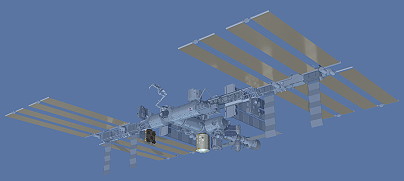 |
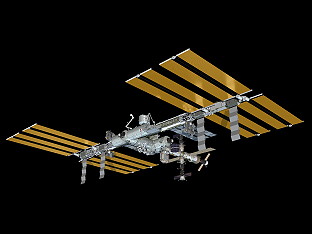 |
 |
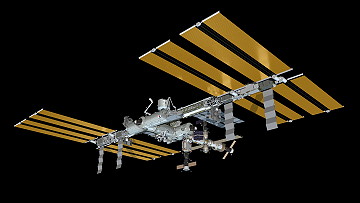 |
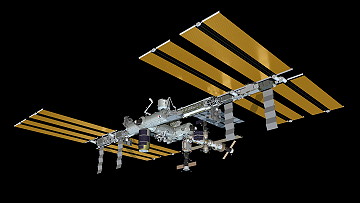 |
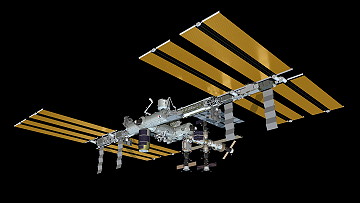 |
 |
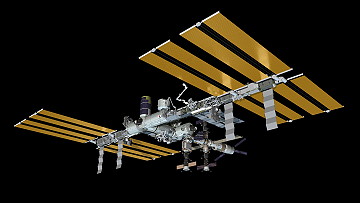 |
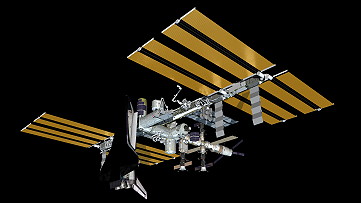 |
|
Photos
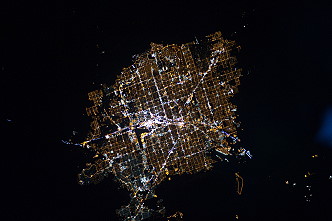 |
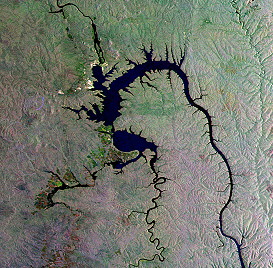 |
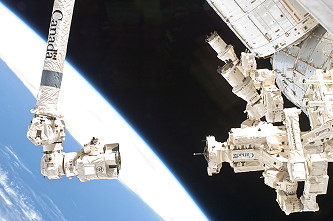 |
 |
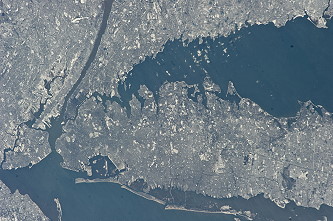 |
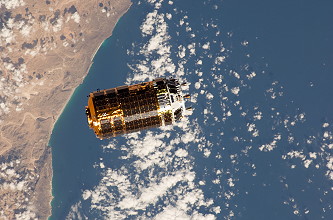 |
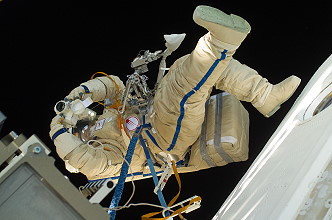 |
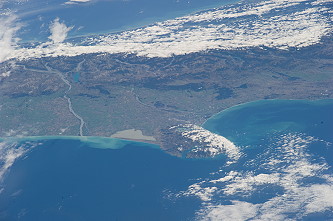 |
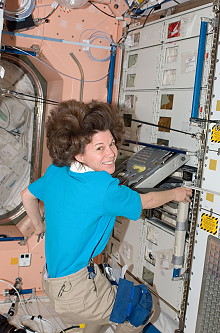 |
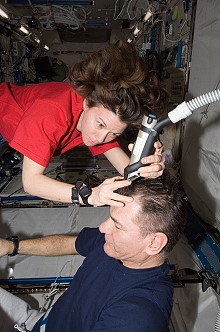 |
 |
 |
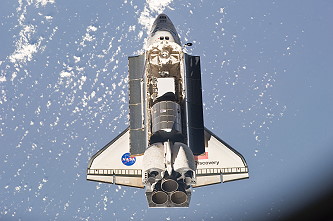 |
 |
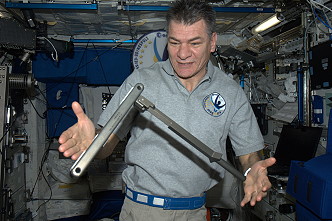 |
|
more Earth observation photos |
|
more EVA photos |
|
more onboard photos |
|
| © |  |
Last update on December 14, 2020.  |
 |